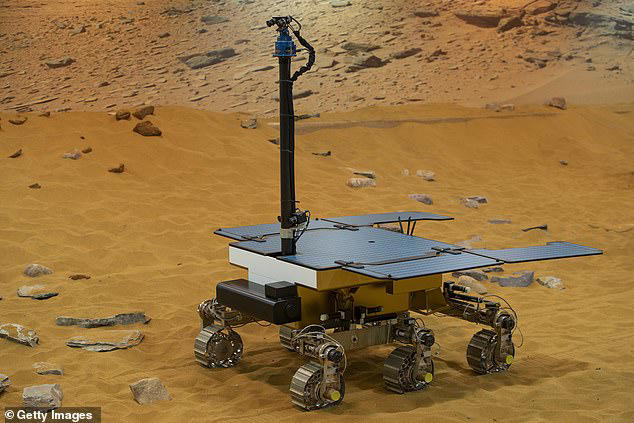
In a revelation that could redefine humanity’s place in the universe, scientists have identified an 1,800-mile-wide plain on Mars with the tantalizing potential to host alien life. The region, known as Acidalia Planitia, lies in the planet’s northern hemisphere and may hold the key to answering one of humanity’s greatest questions: Are we alone?
The groundbreaking discovery suggests that beneath the icy surface of Acidalia Planitia, conditions might be just right for life. The subsurface here boasts an optimal mix of water, heat, and energy—ingredients essential for supporting microbial life. Temperatures in this underground refuge hover between 32°F and 50°F, warm enough for liquid water to exist in the soil.
“Where there is liquid water, life has a chance,” the researchers declared in their study, currently available on the pre-print server arXiv. While awaiting peer review, the findings are already creating ripples in the scientific community, offering a promising location to intensify the search for extraterrestrial life.
The Martian Sweet Spot for Life
At the heart of the study lies the potential presence of methanogens—microbes known to thrive in extreme, oxygen-free environments. These hardy organisms produce methane as a by-product of their metabolism, and their survival in such conditions on Mars would provide profound evidence of life beyond Earth.
The researchers zeroed in on Acidalia Planitia because of its unique geological makeup. The region’s subsurface, enriched with radiogenic heat-producing elements, creates a perfect storm of conditions for these cold-adapted microbes to thrive.
“The subsurface of the southern Acidalia Planitia is a putative target region for hosting cold-adapted Methanosarcinaceae-like and/or Methanomicrobiaceae-like methanogens,” the study states.
If verified, this would also resolve a long-standing debate about methane in the Martian atmosphere—a mystery that has divided scientists for decades.
The Methane Mystery
Since 1999, researchers have detected fluctuating levels of methane on Mars. NASA’s Curiosity rover famously reported traces of the gas, yet the European Space Agency’s ExoMars Trace Gas Orbiter failed to confirm the findings, igniting skepticism about its existence.
Methane could originate from biological sources, like methanogens, or non-biological processes, such as volcanic activity. If Acidalia Planitia’s subsurface hosts microbial life, it would strongly support the idea that Martian methane has a biological origin.

A Cosmic Turning Point
This discovery transcends academic curiosity. Finding living organisms on Mars would rewrite our understanding of biology and the potential for life in the cosmos. It would also raise profound questions about the origin of life on Earth.
For now, Acidalia Planitia offers a specific target for future missions and experiments. The implications of this research extend far beyond the Martian surface, as scientists work to unravel the enigma of methane and uncover what may lie beneath the Red Planet’s frozen crust.
The pursuit of alien life is no longer a distant dream; it is a reality within our grasp. Acidalia Planitia may soon become ground zero for the most extraordinary discovery in human history.
Will Mars finally reveal its secrets? Humanity waits with bated breath.





